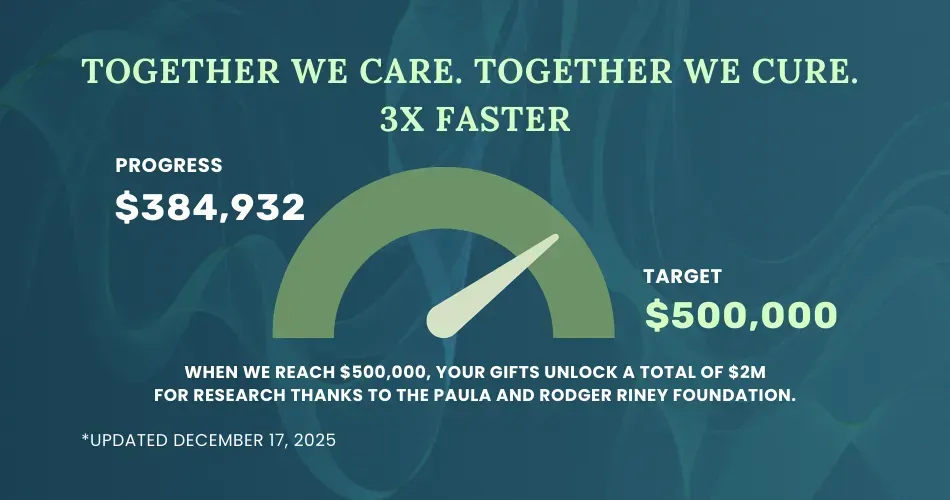What is Large B Cell Lymphoma?
What is DLBCL?
Diffuse Large B-Cell Lymphoma (DLBCL) is the most common type of non-Hodgkin lymphoma (NHL) in adults, accounting for about 30% of cases. DLBCL is an aggressive, fast-growing cancer that begins in mature B-cells—white blood cells that normally produce antibodies to protect the body against bacteria, viruses, and toxins.
How Does Diffuse Large B-Cell Lymphoma Develop?
In DLBCL, the B-cells become abnormally large, grow uncontrollably, and form tumors, that can arise in lymph nodes or outside of the lymphatic system, in the gastrointestinal tract, testes, thyroid, skin, breast, bone, or brain. The term "diffuse' refers to the fact that this type of lymphoma is not contained to one area but spread out, affecting multiple locations in the body.
Why Did My B-Cells Become Cancerous?
The exact cause of DLBCL isn't fully understood, but it's believed that several factors may contribute to the development of cancerous B-cells:
- Viral Infections: A weakened immune system may fail to eliminate virus-infected B-cells, leading to their unchecked growth.
- Oxidative Stress: Prolonged exposure to oxidative stress may damage B-cells' DNA, contributing to cancer development.
- Genetic Predisposition: Some individuals may inherit high-risk DNA that predisposes them to developing DLBCL later in life.
Types of Diffuse Large B Cell Lymphoma
There are many subtypes of DLBCL, including:
DLBCL With other Malignancies
- DLBCL with follicular lymphoma of any grade
- DLBCL with gastric mucosa-associated lymphoid tissue (MALT) lymphoma
- DLBCL with nongastric MALT lymphoma
- DLBCL arising from chronic lymphocytic leukemia (CLL) called Richter's transformation
DLBCL Associated With Chronic Inflammatory Conditions
- DLBCL associated with chronic inflammation
- Epstein-Barr virus-positive (EBV-positive) DLBCL
- Fibrin-associated DLBCL (FA-DLBCL)
Division by Gene Expression Profiling
- Double-expressor DLBCL
- Activated B-cell-like (ABC)
- Germinal center B-cell-like (GCB)
- Primary mediastinal B-cell lymphoma (PMBL)
Other Types of DLBCL
- T-cell/histiocyte-rich large B-cell lymphoma
- Gray zone lymphoma (also known as B-cell lymphoma, unclassifiable with features intermediate between DLBCL and Hodgkin lymphoma)
- Primary DLBCL of the central nervous system (CNS)
- Primary cutaneous DLBCL, leg type
- High-grade B-cell lymphomas, not otherwise specified
- High-grade B-cell lymphomas with translocations of MYC and BCL2 and/or BCL6 (double or triple hit lymphoma)
- Large B-cell lymphoma with IRF4 rearrangement
- Intravascular large B-cell lymphoma
- ALK-positive large B-cell lymphoma
Who is at Risk for DLBCL?
The exact cause of DLBCL is not known. However, it is believed to be caused by a combination of genetic and environmental factors. Some risk factors that may increase the likelihood of developing DLBCL include:
- Age: DLBCL is more common in older adults, although it can occur at any age.
- Immune system deficiency: People with weakened immune systems, such as those with HIV/AIDS or those taking immunosuppressive drugs, are at a higher risk.
- Autoimmune diseases: Conditions that cause the immune system to attack the body's own cells, such as rheumatoid arthritis or lupus, may increase the risk.
- Exposure to certain chemicals and radiation: Certain chemicals, such as those used in agriculture, and exposure to radiation may increase the risk.
- Viral and bacterial infections: Certain infections, such as Epstein-Barr virus (EBV), Human T-lymphotropic virus (HTLV-1), Hepatitis C virus (HCV), and Helicobacter pylori, have been associated with an increased risk of DLBCL.
- Organ transplantation: Solid organ transplant recipients have a heightened risk for DLBCL with this risk being highest during the first year after receiving an organ transplant.
How Does DLBCL Vary Among Patients?
According to the National Cancer Institute, the estimated rate of new cases is 5.5 per 100,000 men and women per year in the United States. DLBCL is slightly more common in men compared to women. The median age at diagnosis is 66 years old. Each case of DLBCL is unique, and differences can include:
- Location of Cancer Cells: Some patients have cancer primarily in the lymph nodes, while others may have it in the bone marrow or organs like the spleen and liver.
- Stage of Disease: The number and spread of cancer cells can vary, affecting the stage and treatment plan.
- Genetic Mutations: Different genetic mutations in DLBCL cells can influence disease risk and treatment response.
How Can I Find the Right Specialist for DLBCL Treatment?
Given the complexity and variability of DLBCL, it's crucial to have a specialist involved in your care. A DLBCL specialist can tailor a treatment plan based on your specific case. If you need help finding a specialist, HealthTree’s DLBCL Specialist Directory can be a valuable resource.
Stay Informed with HealthTree News
Educated and empowered patients have better outcomes. That's why we want to help you learn more about your disease with the latest lymphoma news, including patient stories, treatment breakthroughs, and expert insights so you can make confident, informed decisions.
What is DLBCL?
Diffuse Large B-Cell Lymphoma (DLBCL) is the most common type of non-Hodgkin lymphoma (NHL) in adults, accounting for about 30% of cases. DLBCL is an aggressive, fast-growing cancer that begins in mature B-cells—white blood cells that normally produce antibodies to protect the body against bacteria, viruses, and toxins.
How Does Diffuse Large B-Cell Lymphoma Develop?
In DLBCL, the B-cells become abnormally large, grow uncontrollably, and form tumors, that can arise in lymph nodes or outside of the lymphatic system, in the gastrointestinal tract, testes, thyroid, skin, breast, bone, or brain. The term "diffuse' refers to the fact that this type of lymphoma is not contained to one area but spread out, affecting multiple locations in the body.
Why Did My B-Cells Become Cancerous?
The exact cause of DLBCL isn't fully understood, but it's believed that several factors may contribute to the development of cancerous B-cells:
- Viral Infections: A weakened immune system may fail to eliminate virus-infected B-cells, leading to their unchecked growth.
- Oxidative Stress: Prolonged exposure to oxidative stress may damage B-cells' DNA, contributing to cancer development.
- Genetic Predisposition: Some individuals may inherit high-risk DNA that predisposes them to developing DLBCL later in life.
Types of Diffuse Large B Cell Lymphoma
There are many subtypes of DLBCL, including:
DLBCL With other Malignancies
- DLBCL with follicular lymphoma of any grade
- DLBCL with gastric mucosa-associated lymphoid tissue (MALT) lymphoma
- DLBCL with nongastric MALT lymphoma
- DLBCL arising from chronic lymphocytic leukemia (CLL) called Richter's transformation
DLBCL Associated With Chronic Inflammatory Conditions
- DLBCL associated with chronic inflammation
- Epstein-Barr virus-positive (EBV-positive) DLBCL
- Fibrin-associated DLBCL (FA-DLBCL)
Division by Gene Expression Profiling
- Double-expressor DLBCL
- Activated B-cell-like (ABC)
- Germinal center B-cell-like (GCB)
- Primary mediastinal B-cell lymphoma (PMBL)
Other Types of DLBCL
- T-cell/histiocyte-rich large B-cell lymphoma
- Gray zone lymphoma (also known as B-cell lymphoma, unclassifiable with features intermediate between DLBCL and Hodgkin lymphoma)
- Primary DLBCL of the central nervous system (CNS)
- Primary cutaneous DLBCL, leg type
- High-grade B-cell lymphomas, not otherwise specified
- High-grade B-cell lymphomas with translocations of MYC and BCL2 and/or BCL6 (double or triple hit lymphoma)
- Large B-cell lymphoma with IRF4 rearrangement
- Intravascular large B-cell lymphoma
- ALK-positive large B-cell lymphoma
Who is at Risk for DLBCL?
The exact cause of DLBCL is not known. However, it is believed to be caused by a combination of genetic and environmental factors. Some risk factors that may increase the likelihood of developing DLBCL include:
- Age: DLBCL is more common in older adults, although it can occur at any age.
- Immune system deficiency: People with weakened immune systems, such as those with HIV/AIDS or those taking immunosuppressive drugs, are at a higher risk.
- Autoimmune diseases: Conditions that cause the immune system to attack the body's own cells, such as rheumatoid arthritis or lupus, may increase the risk.
- Exposure to certain chemicals and radiation: Certain chemicals, such as those used in agriculture, and exposure to radiation may increase the risk.
- Viral and bacterial infections: Certain infections, such as Epstein-Barr virus (EBV), Human T-lymphotropic virus (HTLV-1), Hepatitis C virus (HCV), and Helicobacter pylori, have been associated with an increased risk of DLBCL.
- Organ transplantation: Solid organ transplant recipients have a heightened risk for DLBCL with this risk being highest during the first year after receiving an organ transplant.
How Does DLBCL Vary Among Patients?
According to the National Cancer Institute, the estimated rate of new cases is 5.5 per 100,000 men and women per year in the United States. DLBCL is slightly more common in men compared to women. The median age at diagnosis is 66 years old. Each case of DLBCL is unique, and differences can include:
- Location of Cancer Cells: Some patients have cancer primarily in the lymph nodes, while others may have it in the bone marrow or organs like the spleen and liver.
- Stage of Disease: The number and spread of cancer cells can vary, affecting the stage and treatment plan.
- Genetic Mutations: Different genetic mutations in DLBCL cells can influence disease risk and treatment response.
How Can I Find the Right Specialist for DLBCL Treatment?
Given the complexity and variability of DLBCL, it's crucial to have a specialist involved in your care. A DLBCL specialist can tailor a treatment plan based on your specific case. If you need help finding a specialist, HealthTree’s DLBCL Specialist Directory can be a valuable resource.
Stay Informed with HealthTree News
Educated and empowered patients have better outcomes. That's why we want to help you learn more about your disease with the latest lymphoma news, including patient stories, treatment breakthroughs, and expert insights so you can make confident, informed decisions.
Trending Articles
Get the Latest Large B Cell Lymphoma Updates, Delivered to You.
By subscribing to the HealthTree newsletter, you'll receive the latest research, treatment updates, and expert insights to help you navigate your health.
Together we care.
Together we cure.
3x Faster.




